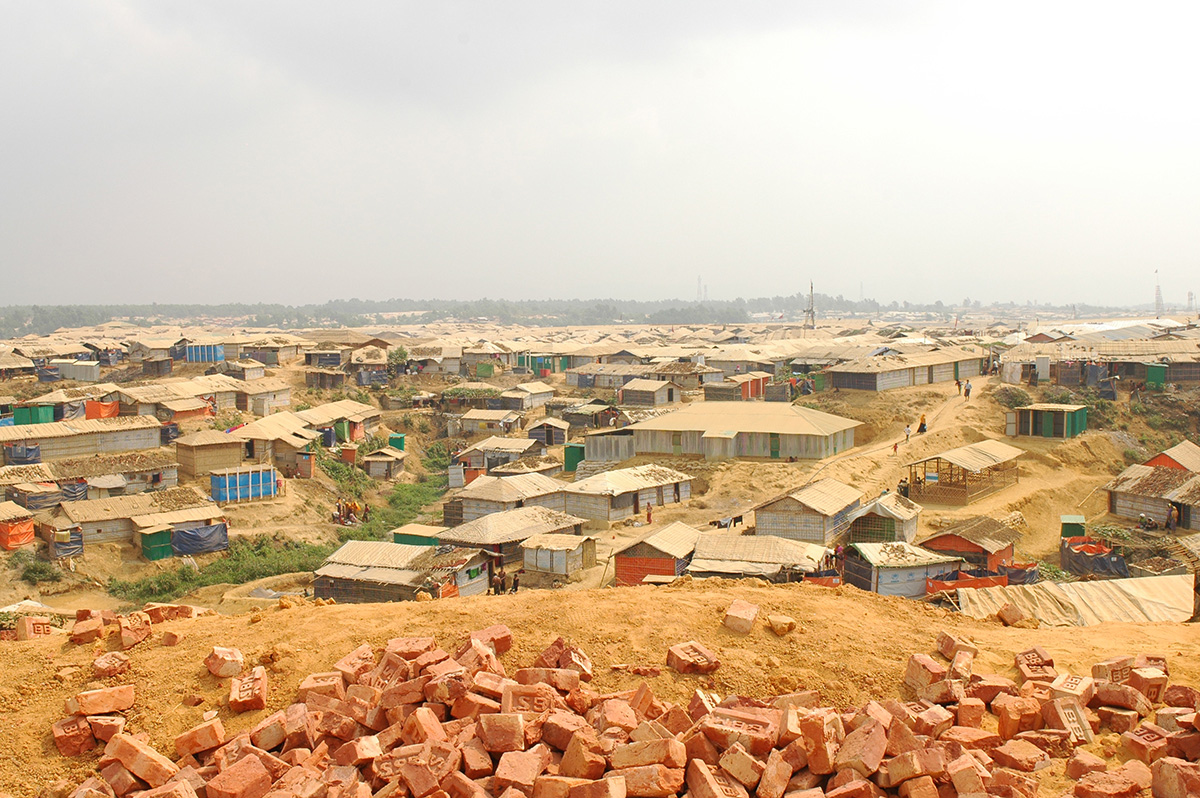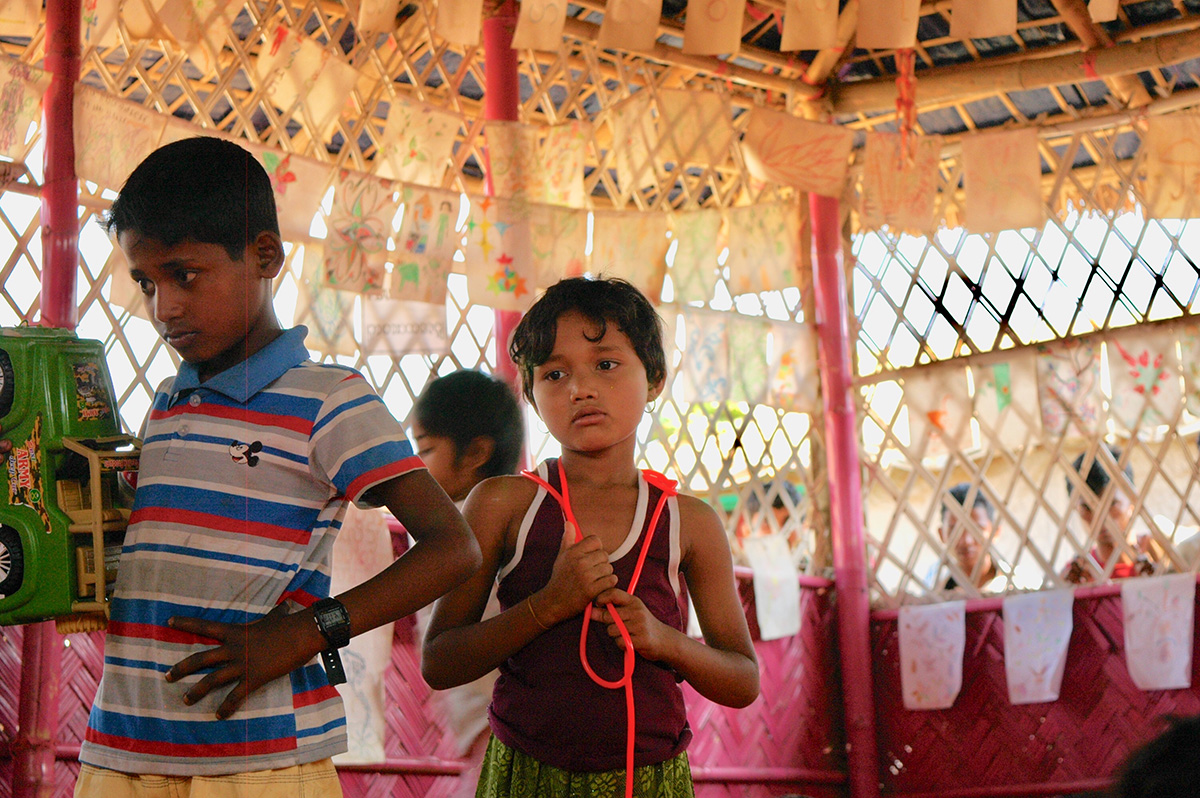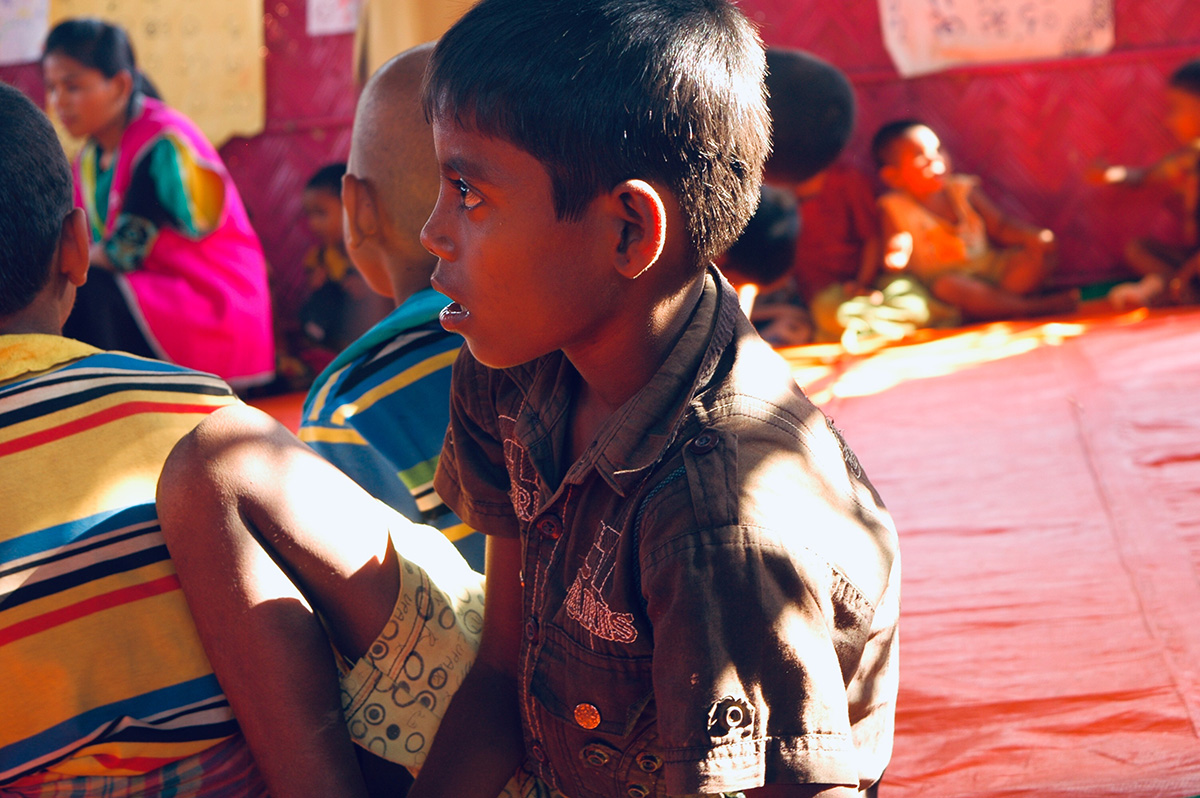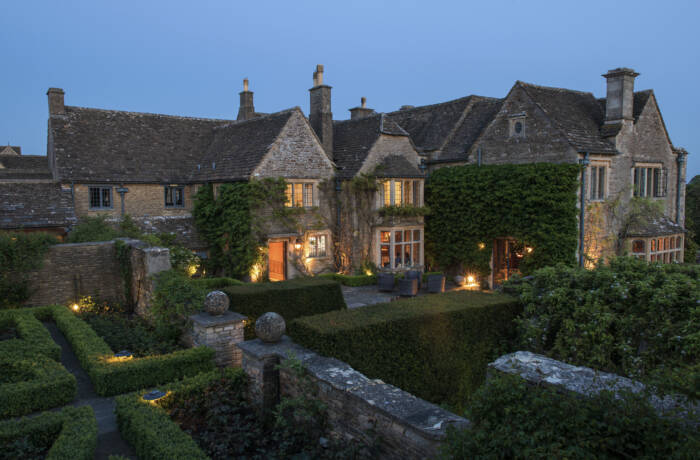Last year, 13-year-old Dagmar Rothschild travelled to Bangladesh to visit the Rohingya refugee camps with the non-profit organisation BRAC. Here the young writer reflects on her journey and the impacts of discrimination
All photography by Dagmar Rothschild
I walk along the narrow dirt paths with sewage flowing through the gutters, the sound of screaming children fills the air. The roads are lined with huts held up by thin pieces of bamboo. I turn around looking at the thousands of tents that seem to go on forever as no matter how far I look it seems as if the people and the tents don’t stop. Standing in the centre of one of the largest refugee camps in the world which holds nearly a million Rohingya refugees, I feel as if I have been transported into another world.
Follow LUX on Instagram: the.official.lux.magazine
A large number of Rohingya refugees fled from Myanmar to Bangladesh in August 2017 because they claim that the Burmese government was persecuting them for their religious (Muslim) beliefs. They say that fleeing the country was the only option since their jobs were being taken away, their houses were being burned down and the military had been using violence against them. The refugees reported shootings, beatings and rapes.
As I travelled through the camps, I began to realise that although nobody could ever call a place like this home, at least it provided the refugees with a feeling of safety, which is something that many of them have rarely experienced. Although the Rohingya have no form of citizenship (the Myanmar government did not issue them passports), they do have shelter, healthcare, food, water, and primary education. Yet, I still sensed a profound feeling of loss. Not only had they lost everything they had treasured most in the past, but they also had lost all hope for the future. What I wanted to find out is: how you could provide such a significant number of people with the essentials to live in such a short amount of time and what the future might look like for the Rohingya people.


I was a guest of BRAC (formerly known as Bangladesh Rehabilitation Assistance Committee), an NGO that has long been effectively active in Bangladesh working in the areas of healthcare, education, and micro-finance. BRAC was one of the first NGOs on the scene in Cox’s Bazar when the Rohingya started coming over and they are able to work quickly and efficiently because they know the country and the people. There were people from all walks of life in the refugee camp showing how the Burmese government was discriminating against a religion, not a class. The Bangladeshi government does not allow the refugees to go outside of the camp, so their opportunities for work are minimal. The adults are permitted to open a food stall or do small jobs around the community. People want to work, they want to support their family and not sit around all day because they have nothing to do. Throughout the camps many people are being trained on how to prevent disease spreading by washing their hands regularly in clean water and cooking food in a sanitary way.

I spent four days touring around the refugee camps, but I didn’t come close to seeing all of it. One of the things I was interested in is talking to young children. Children in the camps are encouraged to spend their days in a child-friendly space where they have access to a safe child-friendly environment and can get a standard education and interact with children their age. However, as I talked to these kids with a translator, I could tell that they were still afraid. They didn’t know whom to trust and when they would be able to sense the feeling of safety again. Although some children do spend their time in the child-friendly spaces, many other children spend their days either sitting in their tents or wandering the streets desperately looking for something to do, someone to talk to. Many children, girls in particular, are too scared even to leave their tents because they fear that they will be kidnapped and will have to relive their horrifying memories.
Read more: Model and stylist Mouchette Bell on Buddhism and Anna Wintour
I left these camps with questions and thoughts whirring around my brain. I’ve grown up in a world where I don’t have to worry about having to flee my country or having access to clean water. For me, these essentials to life were just handed to me, and I tend not to even think about it. From a young age, my parents always tried to teach me how lucky I was because there were people all around the world who were struggling, and it didn’t have anything to do with what they had done. I guess a lot of it is due to luck. I definitely would not be sitting here right now in my air-conditioned house typing on a laptop. Instead, I would be crunched up in the corner of a tent with 20 other people wondering why I was there, what I had done. The Rohingya refugees did nothing wrong; they were persecuted and discriminated because of their beliefs. How could anyone let this happen?
We hear about acts of violence and discrimination every day. A lot of us think that something needs to change, but still most of us carry on with our everyday lives. That’s where the problem is, nothing is going to change if we don’t change it.
Find out how you can help: response.brac.net









